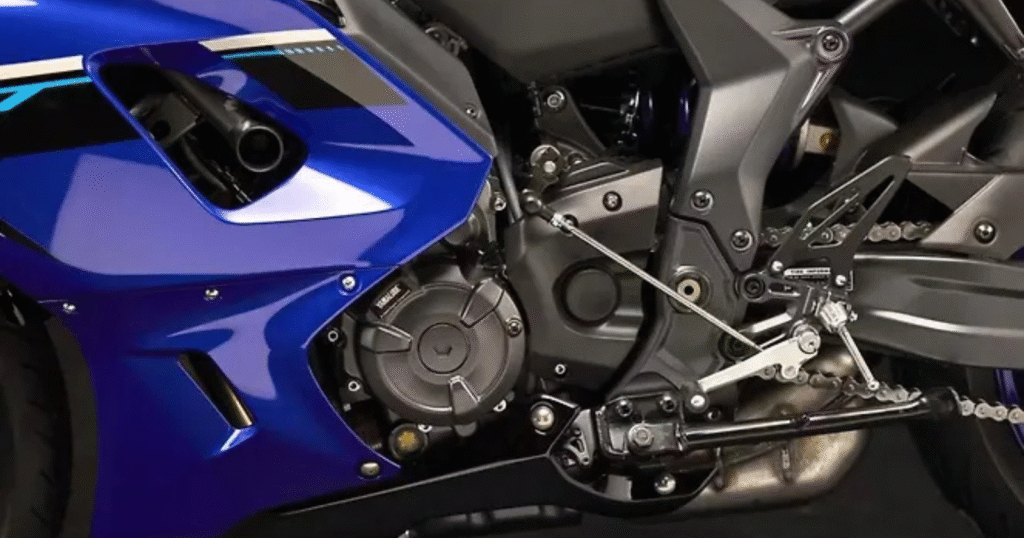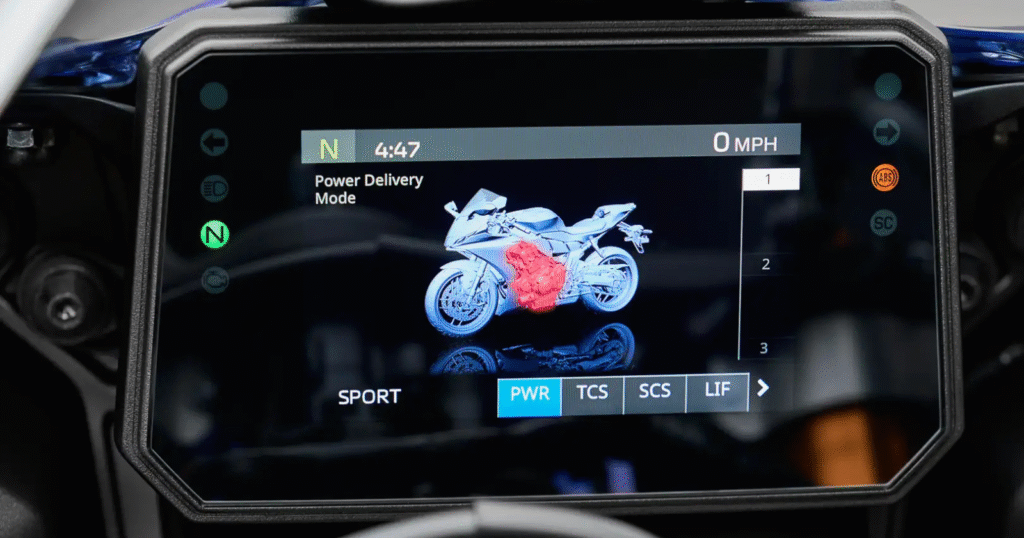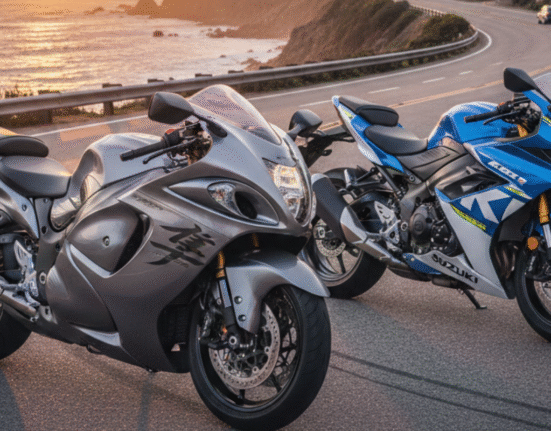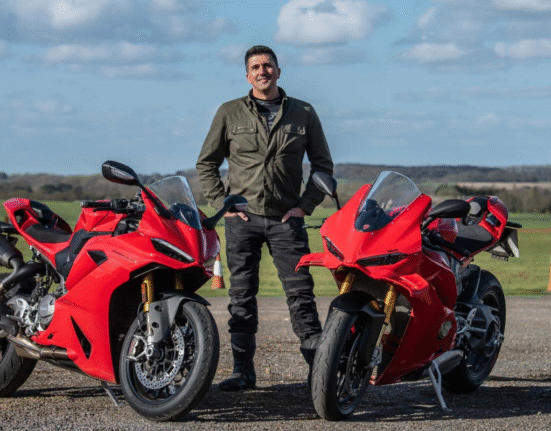Yamaha has refreshed its middleweight YZF-R7 for the 2026 model year, bringing a notable mix of chassis, electronic and ergonomic upgrades to the CP2-powered platform. The update keeps the familiar 689 cc parallel-twin at its heart but adds a next-generation electronics suite, revised frame geometry and modernised rider interfaces—moves that position the R7 as a serious value proposition in the accessible supersport segment.
Yamaha YZF-R7 Design and Styling
The 2026 R7 retains the aggressive R-Series silhouette while adopting cleaner, sharper bodywork and aerodynamic aids. The front fairing is more compact, the chin spoiler and centre headlight duct have been reworked for improved airflow and subtle winglet elements enhance high-speed stability. Rider ergonomics receive attention too: the fuel tank has been reshaped for better knee grip and movement, clip-on positioning is revised for improved control and seat height is marginally reduced to make the bike more approachable for a broader rider base.

Yamaha YZF-R7 Features
Yamaha’s electronics uplift is the headline: the 2026 R7 comes with a six-axis Inertial Measurement Unit (IMU) that enables lean-sensitive rider aids such as traction control, slide control, wheelie (lift) control, engine-brake management and launch control. The bike also receives a full-colour 5-inch TFT instrument cluster with smartphone connectivity (Y-Connect / Garmin StreetCross navigation compatibility), updated switchgear (auto-cancelling indicators, cruise control in some markets) and a third-generation quick-shifter for clutchless up- and down-changes. The Yamaha Ride Control (YRC) system provides three factory ride modes (Sport, Street, Rain) plus custom/track profiles for further fine-tuning.
Also read: Aprilia RS 457 GP Replica Unveiled at EICMA 2025 with MotoGP-Inspired Styling
Yamaha YZF-R7 Specs
At the mechanical core, Yamaha keeps the proven CP2 689 cc liquid-cooled, DOHC parallel-twin with a 270° crank. Bore and stroke and compression ratio are retained in line with the CP2 family, while chassis updates include a revised tubular steel frame, asymmetrical swingarm and 41 mm fully adjustable KYB front fork paired with a link-type rear monoshock. The claimed wet weight for the new model is approximately 189 kg, seat height about 830 mm and fuel capacity around 14 litres—figures that underline the R7’s blend of agility and everyday usability.

Quick spec snapshot (high-level):
- Engine: 689 cc liquid-cooled parallel-twin (CP2)
- Power/Torque: market figures ~72–74 bhp and ~67 Nm (varies by market)
- Transmission: 6-speed with slipper clutch and quick-shifter
- Chassis: revised tubular steel frame, 41 mm KYB fork, link rear shock
- Electronics: 6-axis IMU, TCS, SCS, LIF, EBM, launch control, 5-inch TFT + smartphone connectivity.
Yamaha YZF-R7 Price
Yamaha has listed the 2026 R7 at an accessible price point in key markets: for example, the U.S. MSRP is reported at US $9,399 for the standard model, with limited/anniversary editions commanding modest premiums in some markets. Australia and other regions show region-specific pricing (and additional local taxes). In India, industry sources and early estimates point to an expected ex-showroom figure in the vicinity of ₹10 lakh, though Yamaha India has not published an official domestic price at the time of writing. Final India pricing will reflect import duties, GST and state-level taxes.
Yamaha YZF-R7 Launch Timeline and Availability

The international reveal and 2026 line-up announcements took place in late 2025, with dealer arrivals and customer deliveries expected from early-to-mid 2026 in markets like the U.S. and Europe. In India, previews and showings (dealer/auto-show displays) have preceded a launch window that analysts expect in late 2025 or early 2026, subject to homologation and import formalities. Availability for demo fleets and pre-bookings typically precedes full dealer deliveries by a few weeks.
Conclusion – The Future of Yamaha’s R-Series
The 2026 Yamaha YZF-R7 represents a smart, calculated upgrade: it keeps the beloved CP2 engine and middleweight character while borrowing high-end electronic controls and chassis refinements from Yamaha’s upper-tier models. For global buyers, the R7’s combination of advanced IMU-based rider aids, modern connectivity and focused ergonomics should make it an attractive option in the middleweight supersport bracket. In India, the bike’s price competitiveness will hinge on CBU duties, recent GST slab changes for >350 cc motorcycles and state road taxes — all of which mean that final on-road cost may differ materially from international MSRP. For prospective Indian buyers, we recommend waiting for the official Yamaha India price announcement and getting a dealer on-road quote to understand exact ownership costs.






